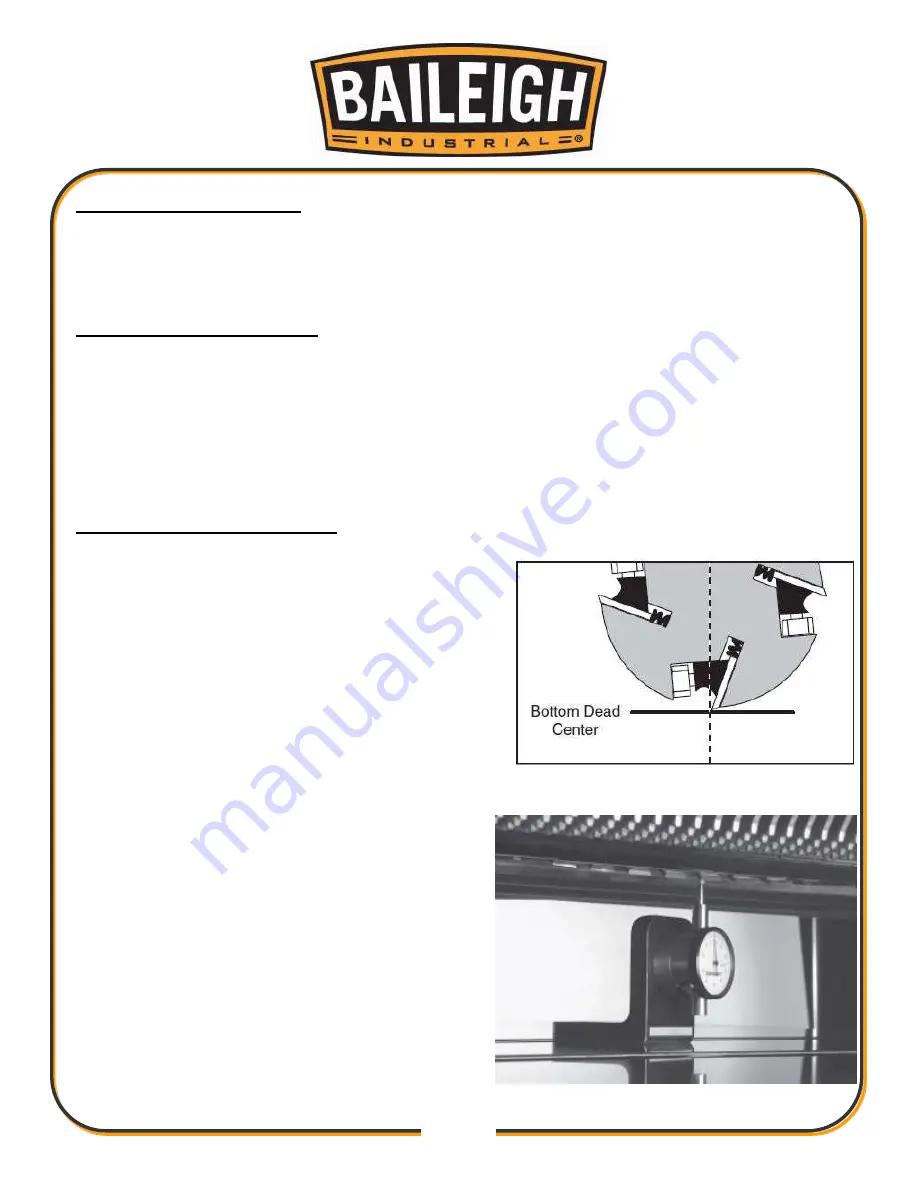
27
27
TABLE PARALLELISM
Maximum Allowable Tolerance Cutterhead/Table Side-to-Side
0.01mm
Table parallelism is critical to the operation of the planer. It is essential the table is parallel with
the cutterhead within 0.01mm from side-to-side.
Table Parallelism Inspection
The easiest way to determine if your table has a parallelism problem is to plane a workpiece and
measure the thickness in multiple locations. If the workpiece is tapered from left to right, then
your table and cutterhead may not be parallel.
Use a dial indicator to further inspect the table parallelism. If you do not have a dial indicator, a
wood block and feeler gauges may be used, but extra care must be taken to ensure accuracy. If
the table is not within the maximum allowable tolerance, it must be adjusted.
Table Parallelism Adjustments
The table is adjusted by turning the elevation
columns underneath the table.
1. Adjust the table height so that the Dial indicator
(or wood block and feeler gauges) will fit between
the table and the bottom of the cutter when the
blade is at the BDC position.
2. UNPLUG OR DISCONNECT PLANER FROM
POWER SOURCE AND LOCK OUT POWER.
3. Raise the cutterhead top cover.
4. Using the cutterhead pulley, rotate the cutterhead
so that the blade edge is at bottom dead center
(BDC). (Fig. 13) This will also place the carbide
insert on the right side of the cutterhead at
BDC.
If you are using a Dial indicator, find BDC of
the carbide insert by slowly rocking the
cutterhead pulley back and forth, and set
the Dial indicator dial to zero (Fig. 14).
If a Dial indicator is not available, use a
wood block and a feeler gauge; then, slowly
rock the cutterhead pulley back and forth so
the carbide insert just makes contact as it
passes the feeler gauge.
Fig. 13
Fig. 14
Summary of Contents for IP-2511-HD
Page 39: ...36 36 ELECTRICAL SCHEMATIC...
Page 40: ...37 37...
Page 41: ...38 38...
Page 42: ...39 39...
Page 43: ...40 40 Electrical Cabinet Layout...
Page 44: ...41 41 CUTTERHEAD PARTS DIAGRAM...
Page 46: ...43 43 TABLE PARTS DIAGRAM...
Page 48: ...45 45 TABLE ROLLER PARTS DIAGRAM...
Page 50: ...47 47 INFEED PARTS DIAGRAM...
Page 52: ...49 49 STAND PARTS DIAGRAM...
Page 54: ...51 51 NOTES...
Page 55: ...52 52 NOTES...
















































